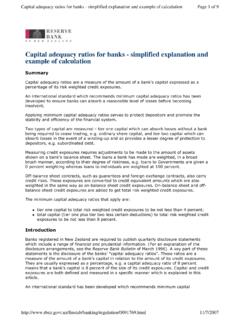Transcription of Prudential Standard LPS 115 Capital Adequacy: Insurance ...
1 January 2013 LPS 115 - 1 Prudential Standard LPS 115 Capital adequacy : Insurance Risk Charge Objective and key requirements of this Prudential Standard This Prudential Standard requires a life company to maintain adequate Capital against the Insurance risks associated with its activities. The ultimate responsibility for the prudent management of Capital of a life company rests with its Board of directors. The Board must ensure that the life company maintains an adequate level and quality of Capital commensurate with the scale, nature and complexity of its business and risk profile, such that it is able to meet its obligations under a wide range of circumstances.
2 The Insurance Risk Charge is the minimum amount of Capital required to be held against Insurance risks. The Insurance Risk Charge relates to the risk of adverse impacts due to movements in future mortality, morbidity, longevity, servicing expenses and lapses. This Prudential Standard sets out the method for calculating the Insurance Risk Charge. This charge is one of the components of the Standard Method for calculating the prescribed Capital amount for life company statutory funds and general funds. January 2013 LPS 115 - 2 Authority 1. This Prudential Standard is made under paragraph 230A(1)(a) of the Life Insurance Act 1995 (the Act).
3 Application 2. This Prudential Standard applies to all life companies including friendly societies (together referred to as life companies) registered under the Act1, except where expressly noted otherwise. 3. A life company must apply this Prudential Standard separately: (a) for a life company other than a friendly society: to each of its statutory funds; and (b) for a friendly society: to each of its approved benefit funds and its management fund. 4. This Prudential Standard only applies to the business of an Eligible Foreign Life Insurance Company which is carried out through its Australian statutory funds but not 5. This Prudential Standard applies to life companies from 1 January 2013.
4 Interpretation 6. Terms that are defined in Prudential Standard LPS 001 Definitions appear in bold the first time they are used in this Prudential Standard . 7. Unless otherwise indicated: (a) the term statutory fund will be used to refer to a statutory fund of a life company other than a friendly society, or an approved benefit fund of a friendly society, as relevant; (b) the term general fund will be used to refer to the shareholders fund of a life company other than a friendly society, or the management fund of a friendly society, as relevant; and (c) the term fund will be used to refer to a statutory fund or a general fund, as relevant. Insurance Risk Charge 8.
5 This Prudential Standard sets out the method for calculating the Insurance Risk Charge. 1 Refer to subsection 21(1) of the Act. 2 Refer to section 16ZD of the Act. January 2013 LPS 115 - 3 9. The Insurance Risk Charge for a statutory fund provides a buffer against the risks of adverse experience or changes to best estimate assumptions with regards to: (a) mortality; (b) morbidity; (c) longevity; (d) lapses; (e) servicing expenses; and (f) other Insurance risks such as option take-up rates. 10. The Insurance Risk Charge for a statutory fund is the reduction, if any, in the Capital base that would occur if the adjusted policy liabilities were changed to an amount equal to the stressed policy liabilities determined under this Prudential Standard .
6 11. The Insurance Risk Charge for the general fund of a friendly society is the servicing expense reserve as defined in paragraphs 52 to 55. 12. There is no Insurance Risk Charge for the general fund of a life company other than a friendly society. Stressed policy liabilities 13. The stressed policy liabilities for non-participating benefits must be determined in the same way as the risk-free best estimate liability (RFBEL), but using stressed assumptions instead of best estimate assumptions in respect of mortality, morbidity, longevity, lapses, servicing expenses and any other Insurance risks such as take-up rates for non-financial options.
7 14. The stressed policy liabilities for participating benefits must be determined in the same way as the participating policy liability (PPL), but using stressed assumptions instead of best estimate assumptions in respect of mortality, morbidity, longevity, lapses, servicing expenses and any other Insurance contingencies such as take-up rates for non-financial options. 15. Stressed assumptions must be used in determining the stressed policy liabilities for existing claims which have not yet been finalised, claims that have been incurred but not reported, and claims that are expected to be incurred in future. January 2013 LPS 115 - 4 16.
8 The stressed policy liabilities must provide for adjusted policy liabilities (calculated using the stressed assumptions) to be funded 12 months from the reporting date for those policies that are projected to remain in force at that date. This test must be applied separately for the following groups: (a) non-participating benefits without entitlement to discretionary additions; (b) non-participating benefits with entitlement to discretionary additions; and (c) participating benefits. The stressed policy liabilities must be determined at sub-group level if the policy benefits for a sub-group of policies are determined by reference to the performance of particular assets that the life company has allocated to the liabilities for that sub-group.
9 Recognition of tax benefits 17. Any tax benefits that would arise as a result of increasing the policy liabilities from the adjusted policy liabilities to the stressed policy liabilities should be assumed to be realisable for the purpose of determining the Insurance Risk Charge. An adjustment must be made to the prescribed Capital amount when the Capital charges are aggregated, if some or all of the tax benefits cannot be offset against deferred tax liabilities. Management actions 18. When determining the impact of each individual stress margin, and when determining the stressed policy liabilities, a life company must make allowance for the actions that it would expect to take in response to each type of stress, subject to the restrictions described below.
10 19. These actions may include, but are not limited to: (a) reducing termination values; (b) reducing discretionary additions to benefits; (c) increasing premium rates; (d) increasing the fees deducted from policies; and (e) reducing the fees payable by a friendly society benefit fund to its management fund. 20. The allowances for management actions must be appropriate, justifiable and equitable in each of the scenarios. Any representations made in the relevant product disclosure documents must be taken into account in determining the management actions that would be applied. Management actions must satisfy policy owners reasonable expectations.
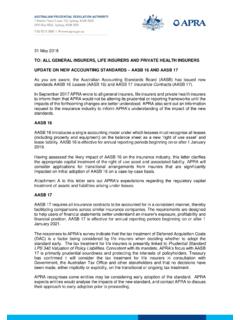


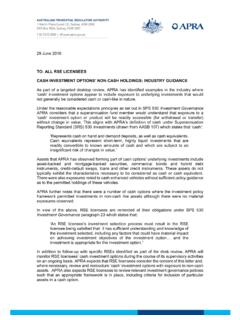



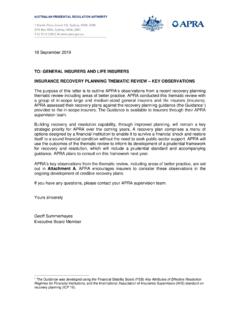

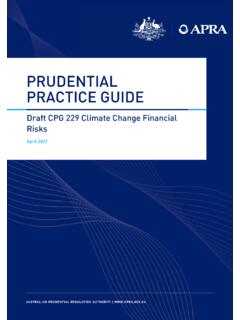


![Risk-Based Capital Framework for Insurers [Version 3.0]](/cache/preview/7/f/d/9/3/4/9/e/thumb-7fd9349e60e9199fa43c75d494e669d9.jpg)






